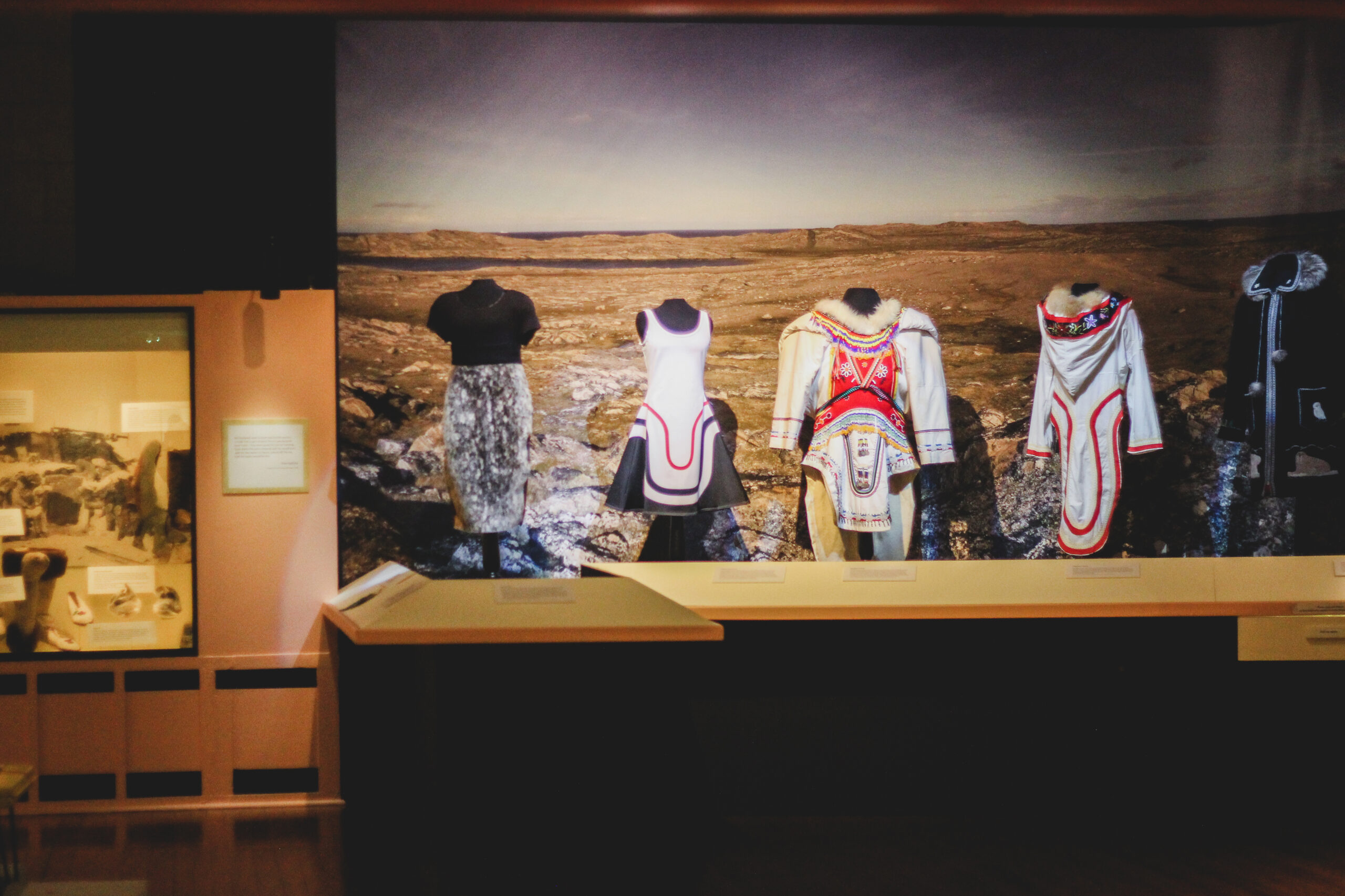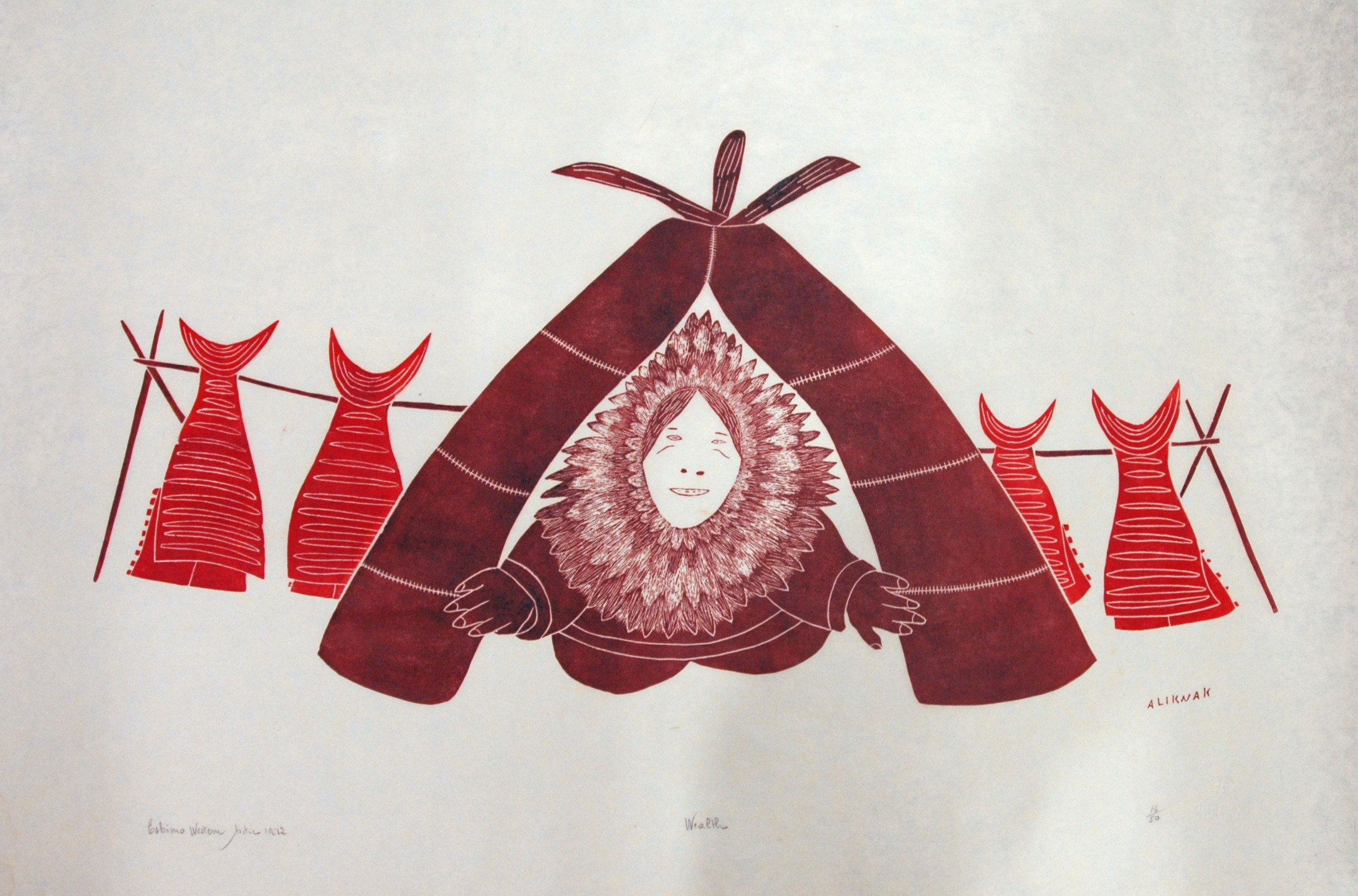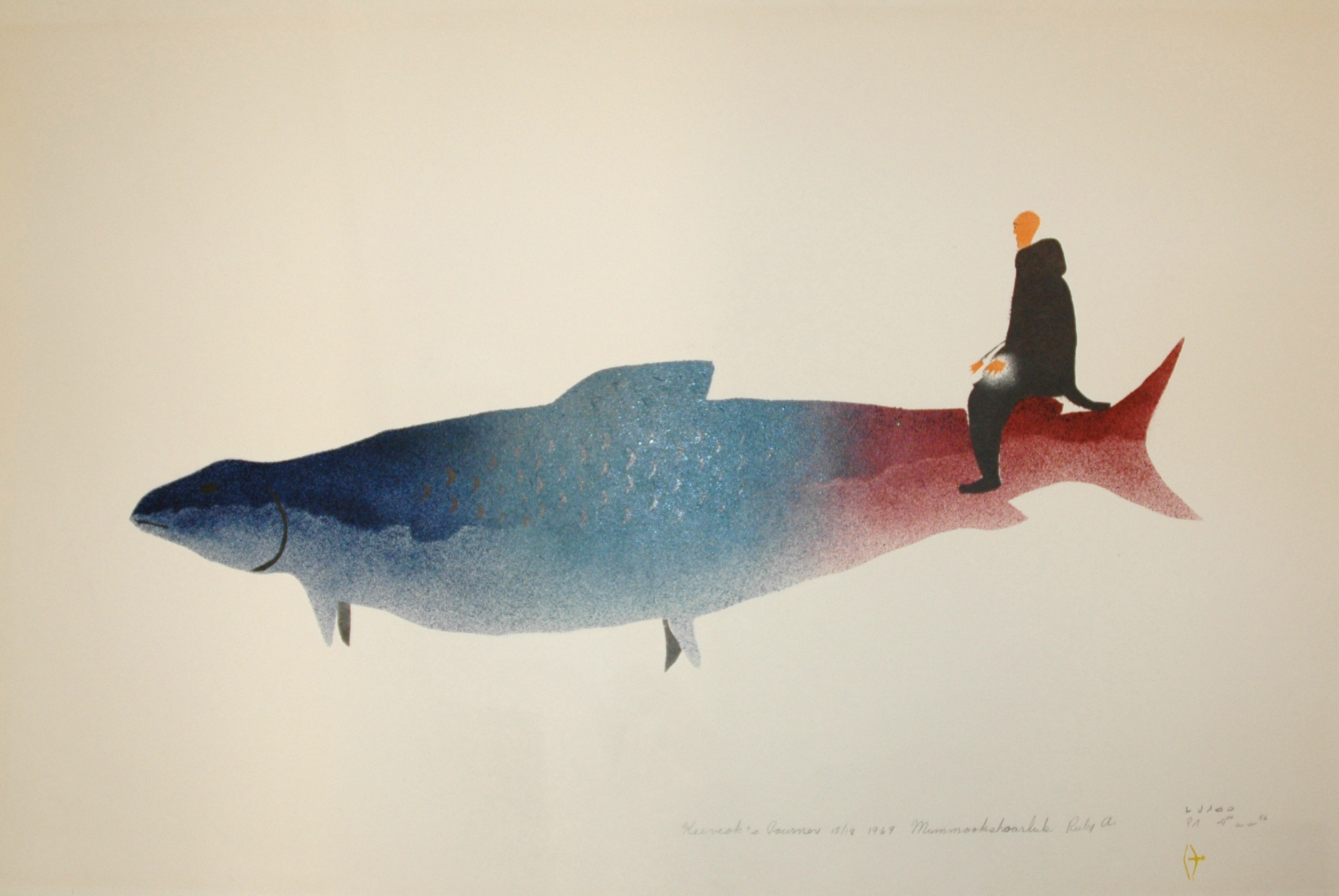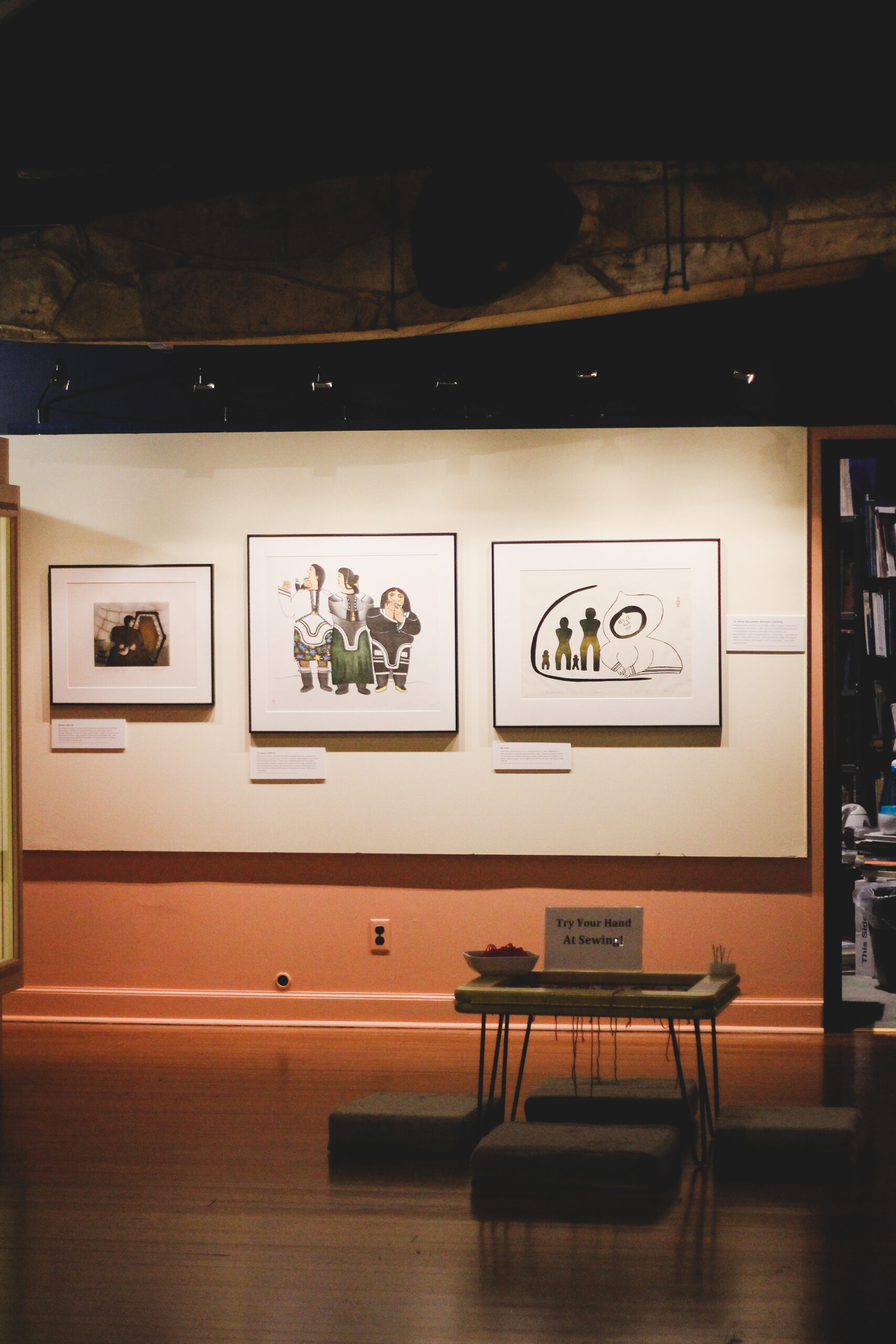50 years later, Arctic Museum celebrates, receives gift
November 10, 2017
 Victoria Yu
Victoria YuThe Peary-MacMillan Arctic Museum and Arctic Studies Center is celebrating the 50th anniversary of its founding with a large addition of new artwork, a birthday party and events that will continue throughout the year.
The Museum received 50 pieces of Canadian Inuit art from Judith and Robert Toll to commemorate its fiftieth birthday. Arctic Museum Curator and Registrar Genevieve LeMoine described this donation as an “installment” to the Tolls’ past donations. The California couple first donated 130 pieces to the College in 2009, after having collected nearly 600 pieces of Inuit art since the 1960s.
Though the Tolls had no previous connection to Bowdoin, LeMoine explained, they were looking for a place to give part of their collection, and a dealer that they had bought from told them about Bowdoin’s museum.
“They weren’t very happy with the California institutions. They feared it would get lost in a big museum, especially one without a northern focus. They eventually decided that this would be the best place,” said LeMoine.
According to LeMoine, the Tolls were interested in the Arctic Museum because the collection would bring a new kind of art to the College.
“One of the things that attracted them to the Museum was the fact that it would transform us by giving us the opportunity to exhibit Canadian Inuit art in a way we hadn’t before,” she said. “The fact that we use it in teaching appealed to them because they’re both educators.”
The Toll’s newest donation connects the museum to the contemporary Arctic.
“One of the things we continually struggle with, and which the Toll’s donation helps a lot with, is communicating about the contemporary Arctic, not just about the past Arctic,” said LeMoine. “[We’re] trying to remind people that the Arctic is still living and changing and important in lots of different ways.”
Most of the other exhibits in the museum consist of donations from alumnus and faculty member Donald B. MacMillan, a member of the Class of 1898, as well as Robert E. Peary, class of 1877.
Arctic-related collections have existed on campus since the 1860s, some of which were originally displayed in the basement of Searles. MacMillan’s frequent donations to the College in the early 1920s ultimately spurred the creation of the Arctic Museum in 1966.
This timing of the decision was fortuitous because it coincided with the construction of Hawthorne Longfellow Library, making Hubbard Hall—the former library—an ideal location for the museum.
“They realized that this space, which had been the main reading room of the library, would be a good spot for it. So they found the money and it opened in June of 1967,” LeMoine said.
Earlier this year, the Museum threw a birthday party—complete with cake and balloons—on June 9, the actual anniversary of the Museum’s dedication.
“We brought out objects from the collections that people don’t usually see,” said Susan Kaplan, professor of anthropology and director of the Peary-MacMillan Arctic Museum and Arctic Studies Center.
Last month, the Museum hosted a dinner in Main Lounge of Moulton Union that brought together significant people in the museum’s history, including Ian White, who sailed on the Arctic schooner “Bowdoin” with MacMillan in 1921 and designed the museum originally.
“We invited all the people who were present when the museum opened its doors,” Kaplan said. “We had a dinner, and I did a presentation titled ‘Looking Forward, Glancing Back.’ It was all really to thank the people who originally put the museum together.”
Throughout this year, the Arctic Museum will host more events as a part of the half-century celebration, which the staff hopes will bring more visitors from throughout the community to experience its exhibits.
“A lot of people don’t know where it is and a lot of people don’t even know that we have it,” Arctic Museum employee Maddi Kuras ’18 said. “Sometimes someone will come into the museum by accident and will end up spending an hour or so in there. It’s just three little rooms, but we have a ridiculously large collection. Everyone always leaves with a deeper appreciation for Bowdoin itself as an institution.”

 COURTESY OF PEARY-MACMILLAN ARCTIC MUSEUM
COURTESY OF PEARY-MACMILLAN ARCTIC MUSEUM COURTESY OF PEARY-MACMILLAN ARCTIC MUSEUM
COURTESY OF PEARY-MACMILLAN ARCTIC MUSEUM
Comments
Before submitting a comment, please review our comment policy. Some key points from the policy: